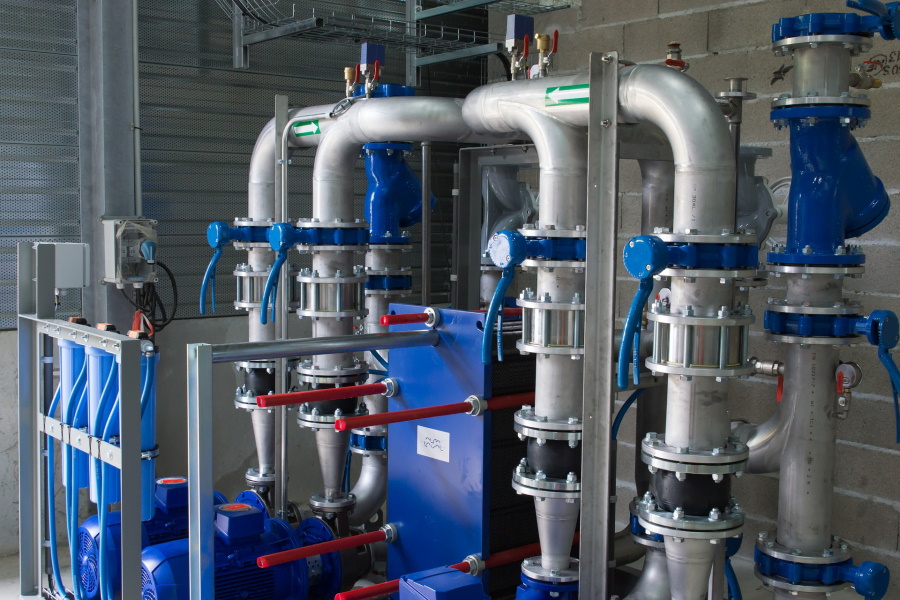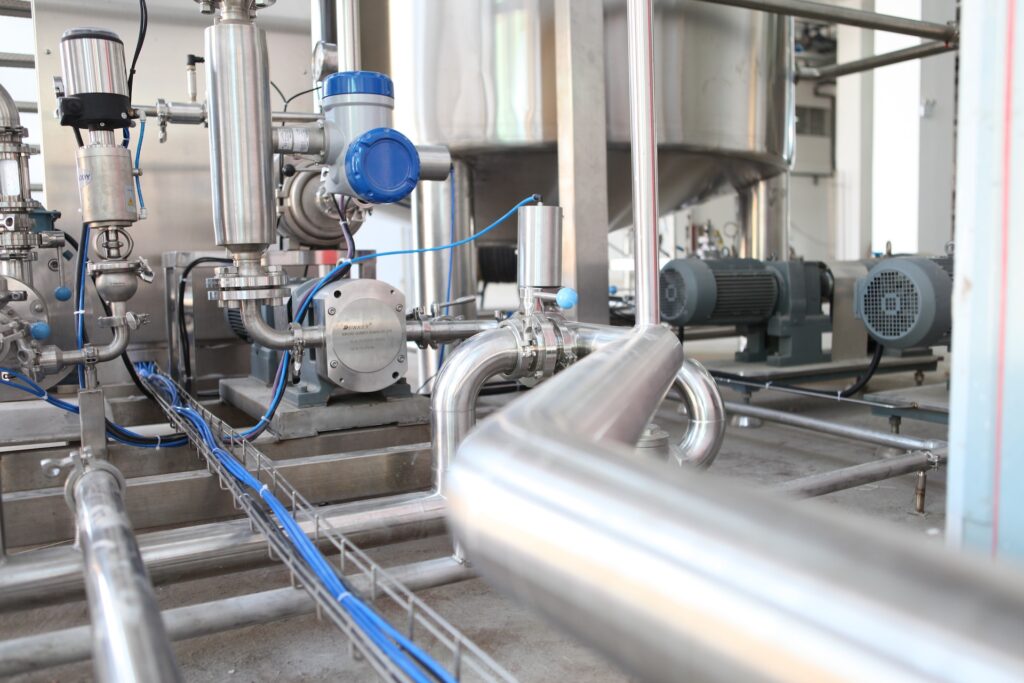Selecting the right piping materials: A game with many variables
Choosing the right material for Pipelines is not a trivial matter. Different industries, such as the chemical, food and pharmaceutical industries, have specific requirements for the materials used in their piping systems. The right material can be crucial for the safety, efficiency and longevity of the entire system.
Piping materials at a glance
The main distinction is between non-alloy steels and alloy steels, which in turn can be divided into three main groups: Low alloy steels with up to 5 % alloying elements, medium alloy steels with 5-10 % and high alloy steels with over 10 % alloying elements. In particular, the low-alloy steels are often used due to their cost-efficient properties and good mechanical strength.
Cost-benefit analysis
The economic factor also plays a major role in the selection of piping materials. A careful cost-benefit analysis must be carried out here. Often it does not make sense to use high-quality alloy steels for Pipelines to be used if the system is only designed for a limited service life. The higher costs for alloy steels do not pay off in such cases.
Table: Piping materials by industry sector
| Industry | Frequently used materials |
| Chemistry | Alloy steel, plastic |
| Food | Stainless steel, plastic |
| Pharma | High alloy steel, ceramics |
| Energy | Carbon steel, alloy steel |
FAQ: Which material is right for me?
The choice of the right material depends on numerous factors, including the type of medium to be transported, the operating conditions and the specific requirements of your project. In-depth consultation with experts is therefore essential.

Connection techniques in piping technology: an art in itself
Joining techniques in the world of piping are as diverse as the materials of the piping they are made of. The right process can have a significant impact not only on efficiency, but also on the service life of the entire installation.
Different connection techniques
From simple bolted connections to specialised welded connections - the choice is wide. The most common connection techniques are bolted, welded, flanged and pinned connections. Each of these techniques has its own advantages and disadvantages in terms of cost, durability and application range.
Table: Joining techniques and their applications
| Connection technology | Advantages | Areas of application |
| Screwed | Simple, inexpensive | Low pressures, simple applications |
| Welded | Very stable, tight | High pressure applications, industry |
| Flanged | Easy to dismantle | Plants with maintenance requirements |
| Plugged | Quick assembly | Temporary installation |
FAQ: Which connection technology is the best?
There is no blanket answer to this question, as the best connection technique depends on many factors, including the type of medium, the pressure conditions and the specific requirements of the project. In many cases, a combination of different techniques can be the most efficient solution.
Special connections: Beyond the standards
There are also specialised jointing techniques such as the Dresser or Victaulic joints. These are particularly useful when a certain degree of flexibility is required in the pipeline. They allow small movements, both axial and angular, and are therefore very valuable in certain industrial applications.
Decision factors for the choice of connection technology
Before deciding on a connection technique, various factors should be considered:
1. materials of the pipelines: Not every connection technique is suitable for every material.
2. operating conditions: Temperature, pressure and type of medium flowing through are decisive.
3. costs: the more specialised the connection, the higher the costs are, as a rule.
4. future maintenance needs: Some connections are easier to maintain than others.
Tip: Longevity through the right choice
An informed choice of connection technology can not only increase the efficiency but also the longevity of the entire pipeline. Incorrectly chosen or poorly executed connections are often the weak points that can lead to leaks and failures.
Temperature and pressure: How they influence material selection
The two critical parameters that need to be considered when selecting piping materials are temperature and pressure. They determine not only the choice of materials, but also the type of joints, seals and insulation that can be used in a system.
Materials for high temperature applications
For high operating temperatures, special piping materials such as stainless and high-alloy steels are often the preferred choice. They are not only resistant to high temperatures, but also offer better corrosion resistance. However, it is important to carry out a careful cost-benefit analysis as these materials are often more expensive.
Cold resistant materials
For applications at extremely low temperatures, materials of the pipelines are required that do not become brittle at cold temperatures. Nickel alloys and special plastics are often used here. These materials are specially designed to retain their mechanical properties even at extremely low temperatures.
Printing conditions and material thickness
The operating pressure of a system has a direct effect on the material thickness. Thicker and therefore more robust materials are often used in high-pressure installations. However, it is important to carefully monitor the pressure throughout the installation, as pressure fluctuations can lead to material fatigue and ultimately pipeline failure.
Standards and guidelines
The choice of piping and jointing materials should always be in accordance with applicable standards and guidelines, such as ANSI B16.5 for flanges or ANSI B31.3 for process piping. These standards provide important information on the pressure-temperature relationship and thus help to make the right choice of material.

Conclusion: The art of choosing the right material
Choosing the right piping materials is not a trivial matter. It depends on a variety of factors, including the type of medium to be transported, operating conditions such as temperature and pressure, as well as economic considerations.
Material vs. costs
While high-alloy and stainless steels offer longer life and better corrosion resistance, they are often more expensive to purchase. A careful cost-benefit analysis must be carried out here. However, the decision should never be made on the basis of cost alone, as the wrong choice of material can lead to higher maintenance and repair costs in the long run.
Sustainability and the environment
In this day and age, the aspect of sustainability should not be neglected either. Materials that are easily recyclable or reusable are increasingly becoming the preferred choice. Energy efficiency during the manufacturing process also plays a role.
FAQ: Frequently asked questions
- Which material is best suited for highly corrosive environments?**
- Stainless steel or special alloys such as Hastelloy are often the best choice.
- Can I use the same material for all applications?**
- No, the choice of material should always be based on the specific application and operating conditions.
- Where can I find information on standards and guidelines?**
- Standards organisations such as ANSI, DIN or TÜV provide detailed documentation.
—
Call-to-action
If you found this article informative and helpful, please feel free to share it with your colleagues and in your network. Proper selection of piping materials is a critical element in engineering, and this information could be very valuable to others as well.
 CAD standard parts How to save 50% time - design quickly and easily
CAD standard parts How to save 50% time - design quickly and easily